Attractions
Sea Organ
Morske Orgulje or Sea Organ plays music with the waves of the sea. It's a 230 foot (70 meter) long organ with thirthy-five organ pipes. Those organ pipes are embedded in concrete under marble steps that cascade into the sea. When there is a wave that crashes against those steps, water will fill the pipes and compress the air in a chamber beneath the steps. It's because the compression and decompression of the air that the organ makes noises. Each length of each pipi is carefully chosen so that the music is in harmony
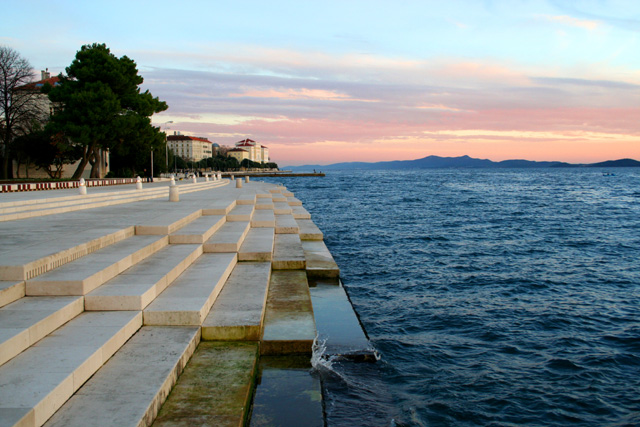
The Greetings to the Sun
Pozdrav Suncu or Greetings to the Sun is a gigantic array of solar panels in the form of circle with a diameter of 77 foot (22 meter). By night it turns in tho a dynamic light show. The light display represens the sun and several other smaller circles are embedded in the sidewalk. Together it represents our solar sytstem. The energy absorbded by the solar panels by day will be used to power the light display at night.
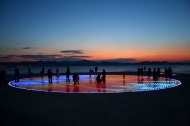
St. Anastasia Cathedral and Bell Tower
This Romanesque cathedral was built during the 12th and 13th centuries. The cathedral's facade is interesting because of its three doors, arches, and rose windows. Inside are an understated stone main altar and a smaller side altar that contains the remains of its namesake saint. But it is the cathedral's detached 15th-century bell tower that attracts the most attention because you can climb to the top to take in a great view of the city.
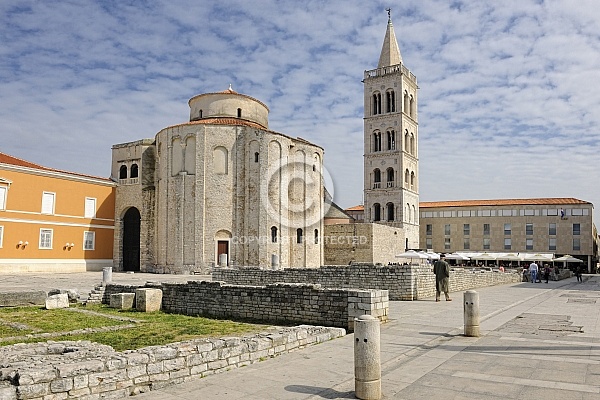
The Forum
This is located in front of the church of Saint Donat and the Archbishop's Palace. It is a municipal square from the Roman era, built from the 1st century BC to the 3rd century AD, 45 by 90 metres in size. It represents a very developed example of the forum complex, and is one of the most important among the Adriatic ancient cities. The inscription with the name of Augustus' proconsul for Illyricum, Tamfil Vaale, carved on the well of the Forum, testifies that the complex construction was started as early as the second decade of the 1st century BC.
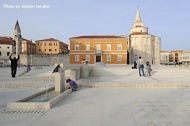
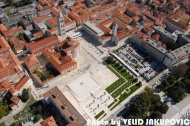
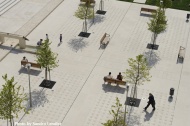
Narodni trg (People's Square)
Narodni trg is the centre of public life in Zadar from the Renaissance until today. On the site of the Large Square, platea magna, the foundations of municipal institutions were laid in the early Middle Ages.
Afterwards, the City Lodge and the Church of St. Peter the New were erected here. They were destroyed by the authorities during the Venetian reign in the 15th century. The 16th century saw the building of City Sentinel (Gradska straža) with the city clock tower, while a new City Lodge was erected on the site of the old one.
On the northern side of the Square is the City Sentinel (Gradska straža) from 1562, designed by a Venetian architect Michele Sanmicheli in the late Renaissance style. The large central clock tower was erected at the beginning of the 19th century with a surrounding stone barrier and railing with holes for cannons. The building once housed the Ethnographic Section of the National Museum, one of the most important collections in the country, and worth seeing for the rich colours of local national costumes, textiles (weaving and lace), jewellery, agricultural, fishing and household objects. Next to it is the small, well preserved pre-Romanesque church of St. Lawrence (Sveti Lovre) with an atrium. It is the oldest preserved building dating from the 11th century; small and simple, but architecturally rich. It can be visited from behind the Cafe bar “Sveti Lovre”.
On the southern side of the People’s Square is the City Lodge (Gradska loža), first mentioned in the 13th century; it was rebuilt in 1565, similar in aspect to some other works of Michele Sanmicheli. This building once was the city’s courthouse, council chambers and library. It was restored after being heavily damaged in the World War II. With its huge windows and high ceilings, it nowadays serves as a stunning exhibition space, hosting events such as the international photography triennial “Man and the Sea” and the triennial of contemporary Croatian art “The Blue Salon”.
The Pedrini Baroque Palace was destroyed by the fascist authorities during the Italian rule, and today’s City hall building was erected in 1935. The Ghirardini Palace in Romanesque style with a balcony from the 15th century in gothic style stands to the east, just outside the square.
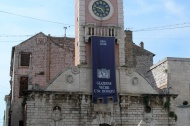
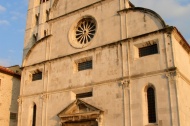
Museum of Ancient Glass Zadar
The museum is one of the city's newest attractions and rightfully so. It's housed in the 19th century Cosmacendi Palace and has some outstanding views that overlook the Jazine harbour. The museum contains one of the premium collections of Roman glassware outside Italy, with a cornucopia of goblets, jars and vials retrieved from archaeological sites across Dalmatia. Highlights include the delicate vessels used by Roman ladies to store perfumes, skin creams and essential oils. Also look out for glass cups used to celebrate Mass, and dainty flasks in which holy water was stored. Take the opportunity to see the replica Roman glassware on sale as you'll no doubt enter one of the classiest souvenir-stops in the city.
The Museum of Ancient Glass is situated in the renewed Cosmacendi house and an added structure, annex in the courtyard of the existing building which consists of a basement, ground floor, first floor and attic with the surface of 1601,4 m2 (gross). Annex consists of a basement, ground floor and first floor with the surface of 972,8 m2 (gross). Part of the natural terrain is the belonging park. The lot has irregular form, it is situated close to the city walls near the main city entrance (Moro bastion from the 16th century).
Contact info
Address: Poljana Zemaljskog odbora 1 Tel: +385 (0)23 363 833 Tel: +385 (0)23 363 830 Fax: +385 (0)23 363 834 www.mas-zadar.hr Opening hours: Summer: MON - SUN: 9:00 am - 9:00 pm Winter: MON - SAT: 9:00 am - 4:00 pm Group visits can be arranged even outside normal opening hours, subject to prior notification.
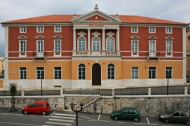
The gold and silver of Zadar
Within the structure to the church of St. Mary, or more specfically her monastery, whose property was heavily damaged during the Second World War a Representative exhibition was formed in 1972 - the Permanent Exhibition of Religious Art, one of the most worth-while exhibitions in Croatia, popularly called "The Gold and Silver of Zadar".
The exhibition "Gold and Silver of Zadar", initiated in 1951 by the Croatian writer Miroslav Krleza, was transformed in 1976 into a permanent display of the Permanent Exhibition of Ecclesiastic Art in the Benedictine Convent of St. Mary in Zadar, one of the first capital buildings of Croatian culture. On the occasion of the exhibition, Krleza wrote one of his best essays, in which he glorified the treasures of Zadar.
The gold and silver of Zadar shine on a surface area of about 1200 m2 in 8 modernly equipped halls, including the reconstructed interior of the old Croatian Church of St. Nediljica from the 11th century. Also included are manuscripts, sculptures, embroideries, tapestry, reliefs, etc., as evidence of the rich past of Zadar from the 8th to 18th centuries, as a town which was an important cultural center, particularly in the Middle Ages. Joys, hopes, patience, suffering, and faith of the tumultuous era of this region's history are woven into the relics and chalices, sculptures, paintings, and embroideries. This priceless treasure has been preserved by the Benedictine nuns throughout the years, as well as during the Patriotic Defense War, and some valuable exhibit items (lace, church fabrics embroidered with golden threads) were produced by the nuns' hands. The particular preciousness, charm, and importance of the exhibited items is in the fact that they are, to a great extent, works of the locally known and unknown masters or are closely connected with Zadar and the Zadar region. The Permanent Exhibition of Ecclesiastic Art places Zadar among the great cultural capitals as such a collection of valuable and exquisite religious works of art all in one place can only be seen in the greatest European centers.
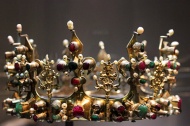
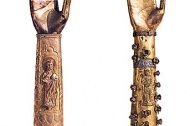
© Copyright 2013. - Grad Zadar, Sint-Maria Instituut - Kogeka, Futuro
This is beta version, website is in development.